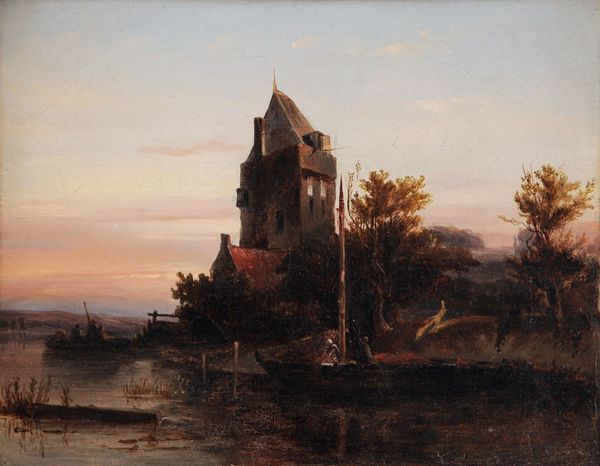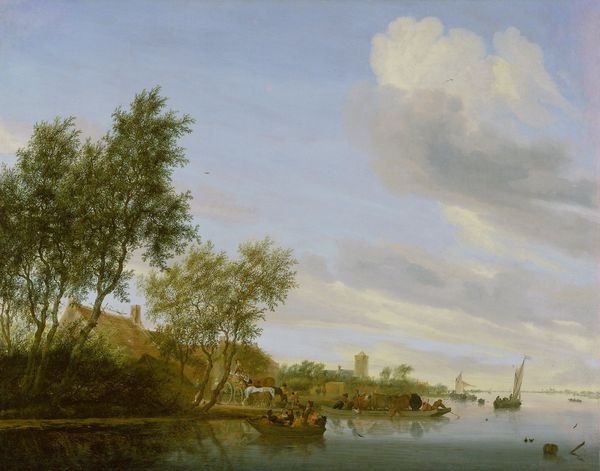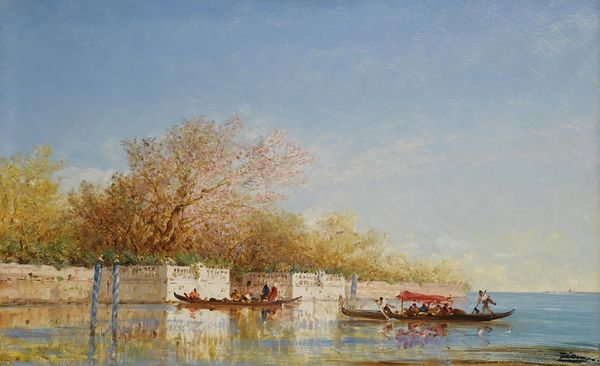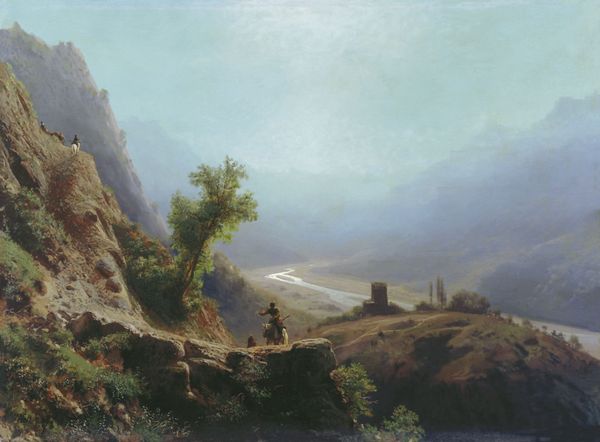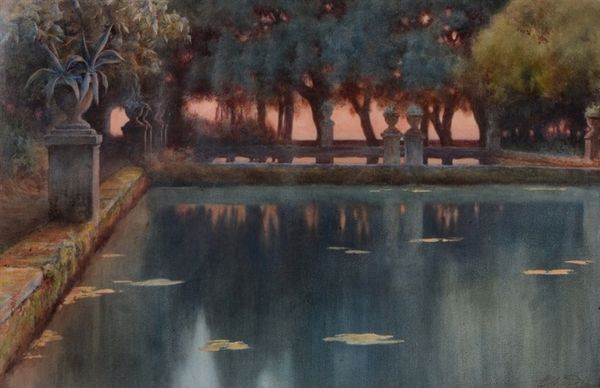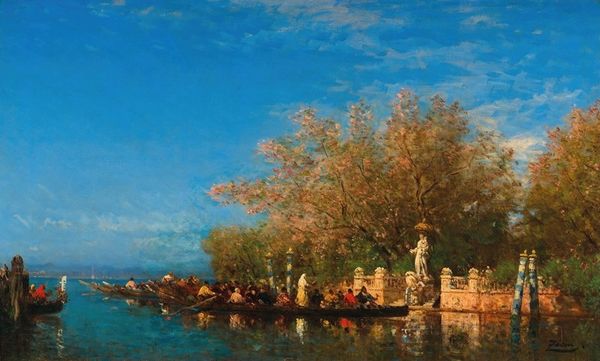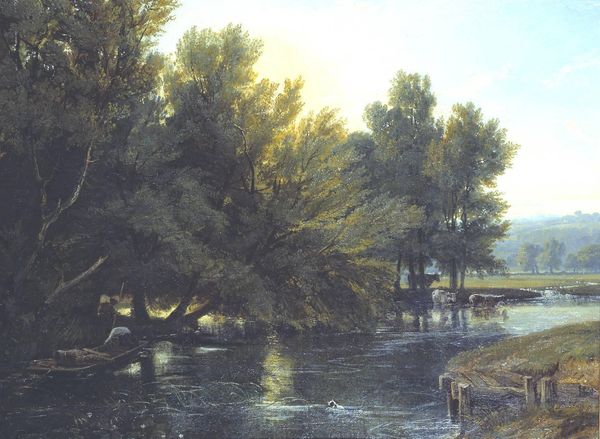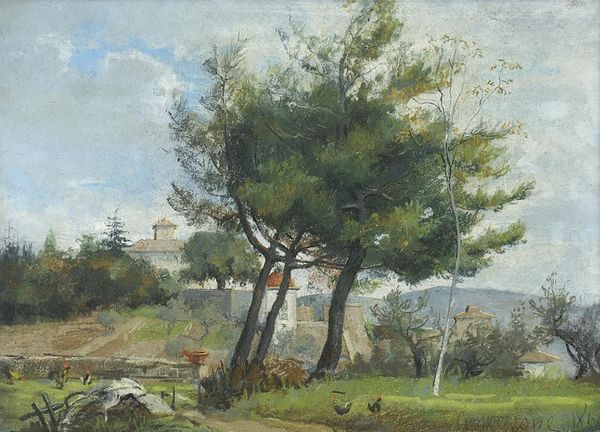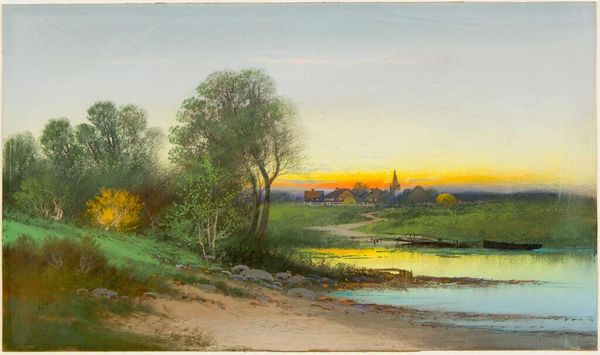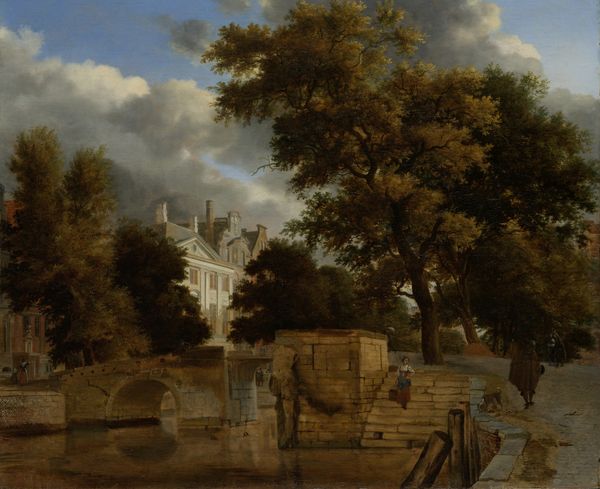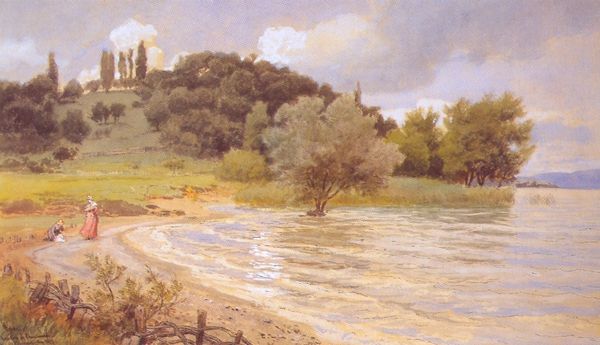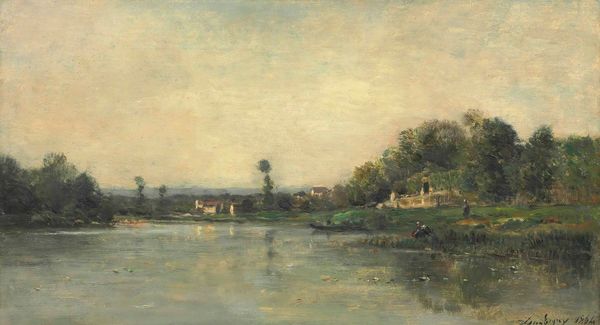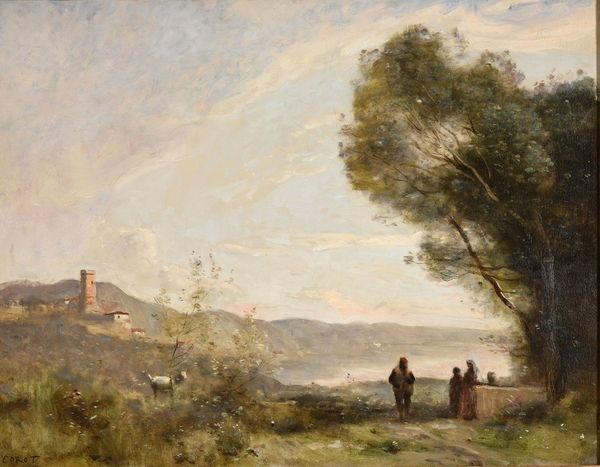
Copyright: Public Domain: Artvee
Curator: Let's spend some time with Arnold Böcklin's "Castle by the Sea & Murder in the Castle Garden," painted in 1859. The work is classic Böcklin—moody, mysterious. What's your immediate sense of it? Editor: It’s definitely brooding. A bit theatrical, like a stage set. I’m immediately drawn to the contrast in textures: the coarse beach against that idealized architecture on the cliff. You’ve got workers and perhaps…victims down below, but this grand, uninhabited triumphal arch overlooking everything. The social and labor tensions feel very acute. Curator: Precisely! He layers such tension. Think of the artist’s hand laboring with the oil paint; creating brushstrokes that mimic rough waves versus those suggesting classical elegance. It asks us to consider those juxtapositions – material realities, social standings, even human life. Editor: Right. What kind of patron would commission such a scene? It isn't just pretty scenery. All of these romantic landscapes ultimately have very specific commissioners. Are they interested in portraying social commentary or merely…owning a view? Curator: I feel he might be pointing us toward mortality, the temporal nature of things. That grand castle feels distant, unreal. What remains concrete is that immediate human struggle, the raw materiality of the beach. Life plays out down on the beach while some symbolic past fades up above. Böcklin seems to be questioning whether it’s a natural consequence, or…is it by design? Editor: The beach seems like the space where actual, physical work is done, while the castle stands by without offering its work or workers in sight. And who's doing the murdering in the garden? I wish Böcklin told us. Curator: Or doesn’t want to...maybe the not knowing is part of the magic! Perhaps what truly endures isn’t the constructed, glorious castle, but rather these fundamental aspects of human experience: labor, violence, and, inevitably, death, right? Böcklin isn't shying away. Editor: Exactly. And thinking about oil paints— how pigment is literally ground, bound, bought, sold. Here, labor depicts itself. You could call this whole scene murder of a kind, an allegory of production as extraction. It is also made out of the Earth; pigment from mineral, brush made of hair, board coming from timber... Curator: Yes, yes! So, thinking about the whole painting, it almost becomes a commentary on not just death but also enduring...what it means to truly leave a mark in a world where everything physical, everything worked, has an origin. What persists after our "castles" crumble? A sobering thought! Editor: Indeed, I’m stuck with that question now— thanks!
Comments
No comments
Be the first to comment and join the conversation on the ultimate creative platform.
